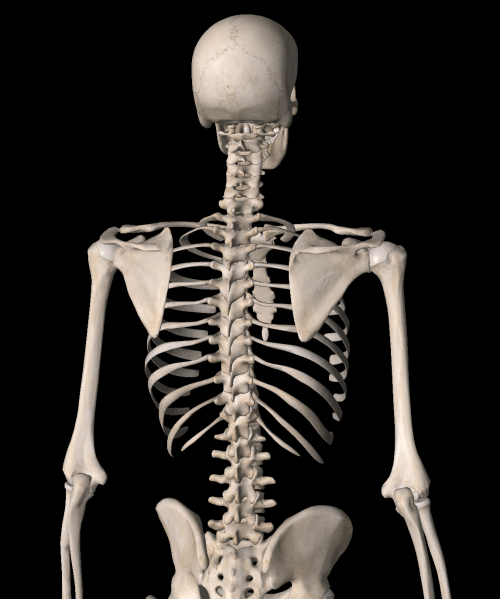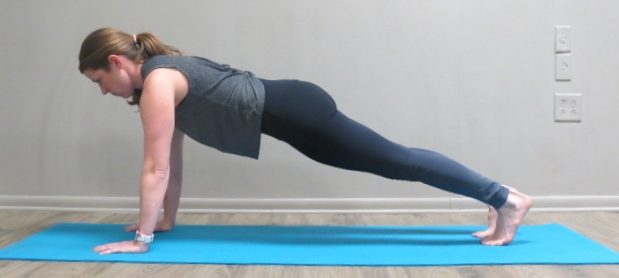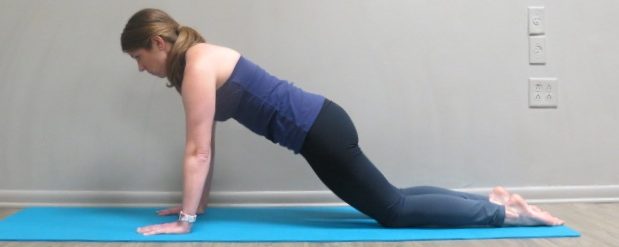This month, we are continuing our series on Whole Body Neutral with a look at neutral shoulder and scapula position. You will want to keep this alignment in mind when performing common exercises such as a plank or push-up, or Yoga poses such as Cat/Cow or Down Dog. Working to keep a neutral shoulder alignment as you move through these exercises will help to protect your joints—while still letting you get the most out of your workout.
To find neutral shoulder alignment, we want to pay special attention to the position of the scapula (the shoulder blades). When in neutral alignment, the scapula should be centered on the upper back (both vertically and horizontally). Your shoulders should be centered within the socket, with the creases of the elbow facing forward. Be sure to keep your forearms relaxed and your chest open.
A plank exercise is a great way to practice keeping your shoulders aligned when bearing weight through your arms, while strengthening your abdominal and shoulder muscles. Below we’ve included instructions for a more traditional plank, as well as a plank from the knees for those who want a modification.
How to do a plank:
Beginning alignment: Begin as shown above, with your weight through your hands and feet (or hands and knees for the modified version). Line your hands up directly beneath your shoulders, with the creases at the front of your wrists and elbows parallel to the front of the mat and your elbows straight. Spread your fingers wide and distribute your weight evenly across your hands. Keep your chest open and your head in line with your spine.
Activate the position: Actively press the mat away from you. Engage your abdominal muscles and the stabilizing muscles around your shoulder blades. Your scapula should stay flat and centered on your upper back—avoid “winging” them backward or collapsing forward. For the standard plank, straighten your knees and engage your quads and hamstrings to keep energy in your legs.
Focus: As you hold this position, maintain neutral plumb line alignment throughout your body. Notice any muscles that are overly tight and relax them. Practice transversus abdominis breathing and pay close attention to your abdominal muscles as they engage.
***
Remember, when we’re looking at any isolated body part’s alignment, we want to make sure that the rest of the body’s alignment isn’t being ignored. To find your Whole Body Neutral alignment, use the following cues:
Lengthen the top of your head to the sky, with your ears centered above your shoulders, your chin level with the ground and your gaze fixed on a point in front of you.
Ground yourself. Distribute your weight across your feet and feel where they connect with the earth.
Center your body along an imaginary plumb line running from the center of your head to the middle of your feet.
Engage your deep muscles and your transversus abdominis. Gently pull in and up at your low belly.
Relax any muscles that are overly tense, paying special attention to your jaw, shoulders, buttocks and toes.




Comments